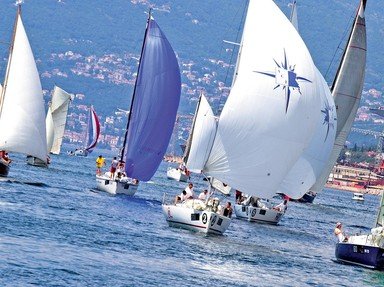Quiz Answer Key and Fun Facts
1. You're sailing a two masted boat with the mizzen mast located forward of the steering post. What type of boat are you on?
2. Rope put aboard a sailboat is called a what?
3. The rigging which exerts side forces to keep the mast vertical are the what?
4. A heading of one eight zero will take you which direction?
5. If you lose forward motion from being in the no sail zone, you are where?
6. Fletcher Christian and the crew of what ship, created mutiny against Captain Bligh?
7. Someone asks you, "How much does she draw?" They want to know your boat's what?
8. One of your crew tells you, "The rabbit comes out of the hole, around the tree and back into the hole." What does that mean?
9. After wintering in Florida, you decide it's time to sail back to New York. As you sail up the Intracoastal Waterway, the buoys on your starboard side will what color?
10. Your sailboat is being overtaken by a powerboat. What is the situation?
11. In the Touchstone sailing adventure, "Captain Ron", Captain Ron played by Kurt Russell states that, "Diesels love their oil like a sailor loves his rum." When the boat owner Martin Harvey, played by Martin Short, asks Captain Ron why that is he replies what?
12. Vertical clearances, such as bridges, will always be shown on tidal area charts measured at what?
13. A catboat is a sailboat with what?
14. What is freeboard?
15. What is a winch mainly used for?
16. What happens if you're sailing in a regatta, and cross the starting line before the race starts?
17. What does a buoy, in inland waters with a red horizontal band over a green horizontal band indicate?
18. If you're sailing at night on a starboard tack and see a single red light off your starboard bow, what should you do?
19. Why should you avoid sailing directly downwind?
20. There are three corners and three edges to the triangle which forms the shape of most sails. Start with the lower forwardmost corner, and go up the front edge to the top of the sail, and continue until you return at the original corner, and name each part as you go.
Source: Author
AccdntlJibe
This quiz was reviewed by FunTrivia editor
Nightmare before going online.
Any errors found in FunTrivia content are routinely corrected through our feedback system.


